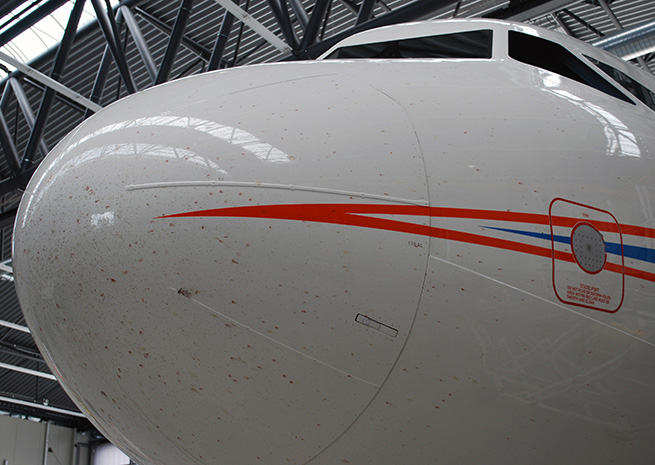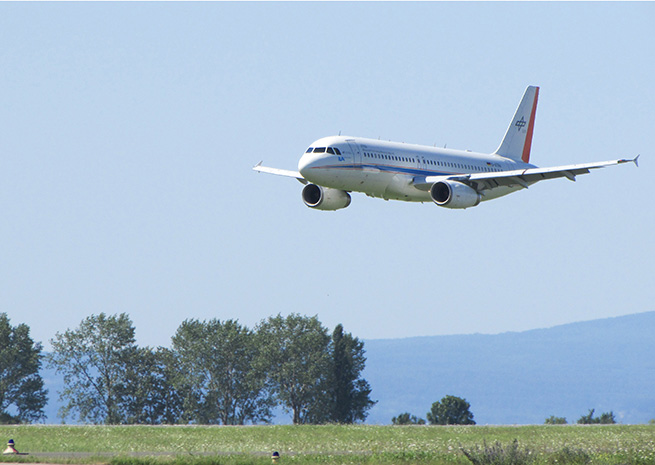German engineers smash bugs in bid to save jet fuel
Low-flying Airbus A320 menaces insect swarms

For a general aviation pilot, the extra drag probably doesn’t cost too much speed or fuel, though wiping off the bug collection after a summer flight can range from inconvenient to distasteful (particularly when it comes to the larger varieties packed with green goo). For airlines, however, smashing a few swarms can, over time, put a noticeable dent in the bottom line, and an airline can pick up a significant haul of smashed bugs during takeoff and landing.
Researchers at the German Aerospace Center (Deutsches Zentrum für Luft- und Raumfahrt, or DLR—Germany’s NASA analog) have been flying about 50 feet over an airport in an Airbus A320, eager to bust as many bugs as possible. The protein collecting has a larger goal: designing a more fuel-efficient wing, one that will shed rather than smash the insects that it encounters.
“As part of our research work on laminar-flow technology, we are working with Airbus to pursue the aim of improving commercial aircraft in terms of environmental sustainability, noise emissions and cost-effectiveness,” says Dominic Gloß from the DLR Institute of Aerodynamics and Flow Technology. “The numerous insects that encounter the front portions of the wings hinder the development of large laminar-flow, low-friction areas on the wing, rendering the effort to save fuel by using laminar flow ineffective.”
Aircraft designers are betting laminar flow wings made of carbon fiber will eventually create significant fuel savings—if only they can keep the bugs off. One strategy being contemplated is to extend flaps along the leading edge to increase lift at low airspeeds, and those flaps could also be designed to protect the wing from bug contamination.

Test pilots made 30 low passes a day over Magdeburg-Cochstedt Airport with (insect) murder in their eyes and adhesive film covering wings to collect the remains of their victims. They picked four days in late July and early August based on the highest expected insect concentrations. The adhesive films will be subjected to computer analysis of bug distributions to help develop appropriate countermeasures. A few more flights are planned in August, so bugs beware.



